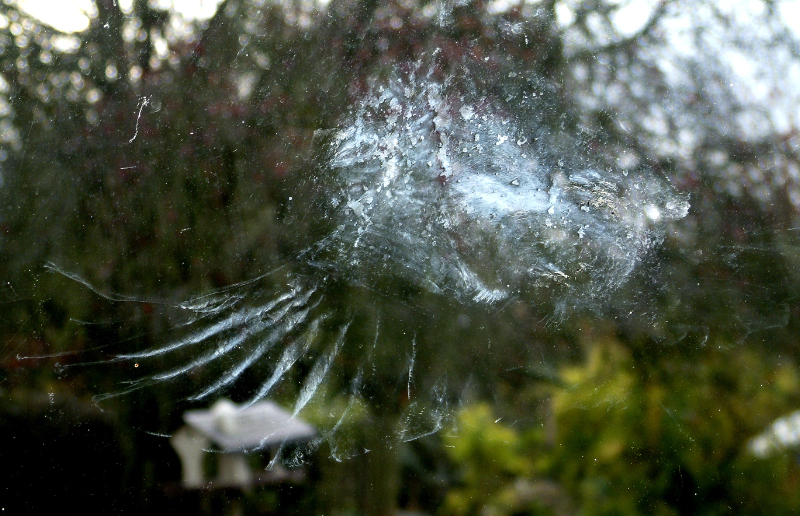Last month, headlines were buzzing about how a single glass-fronted building in Chicago caused 1,000 bird deaths in a single night. This instance of birds dying from hitting windows was exceptional in its scale, but by no means unusual in the facts of the case. Bird collisions with glass are estimated to kill a billion birds every year in the United States alone. Why does this happen, and perhaps more importantly, what can concerned conservationists do about it?

Why do so many birds crash into buildings? First, remember that birds don’t understand glass. Perfectly clear and reflective surfaces don’t exist in nature except in calm water, where they remain strictly horizontal. Humans can intuit where windows and walls are using architectural cues, but birds don’t know where to expect there to be glass instead of empty air. A large glass façade on a building that reflects trees and sky looks like a perfectly good place to fly, if you’re a bird.
Second, as the Chicago example demonstrates, a large proportion of birds killed every year by building collisions are migrants. Migrating birds have left the familiar safety of their breeding or wintering territories behind to undertake a difficult journey, often at night when air currents are more predictable, predators are less active, and stars can be used for navigation. Many of these birds have never been to the areas they’re passing through before as they follow a favorable wind, so they don’t know which areas are full of dangerous tall buildings and which areas are safe to fly through.

Third, areas with a lot of window glass (I.e., highly urban commercial areas) tend to also have a lot of artificial light at night. Streetlights, building exterior lights, still-lit interior offices, lit-up billboards, promotional spotlights, and more all contribute to a dizzying, disorienting experience for birds trying to navigate by starlight. Such lights also cast additional reflections from glass windows, further preventing birds from realizing they’re flying into danger until it’s too late.
What can we do to help birds survive the hostile habitats we have inadvertently created for them? First, follow and support the efforts of organizations trying to reduce light pollution at night. The International Dark Sky Association is a partner organization of Zoo New England, and our local chapter regularly publishes information on new laws and opportunities to contact your representatives to demand less light pollution. Second, there are things you can do to help make glass windows in the buildings where you live, work, and play less dangerous to birds. Research has shown that a single falcon silhouette decal doesn’t do very much, but there are many glass products available that do make a difference. How will you help reduce bird collisions today?
